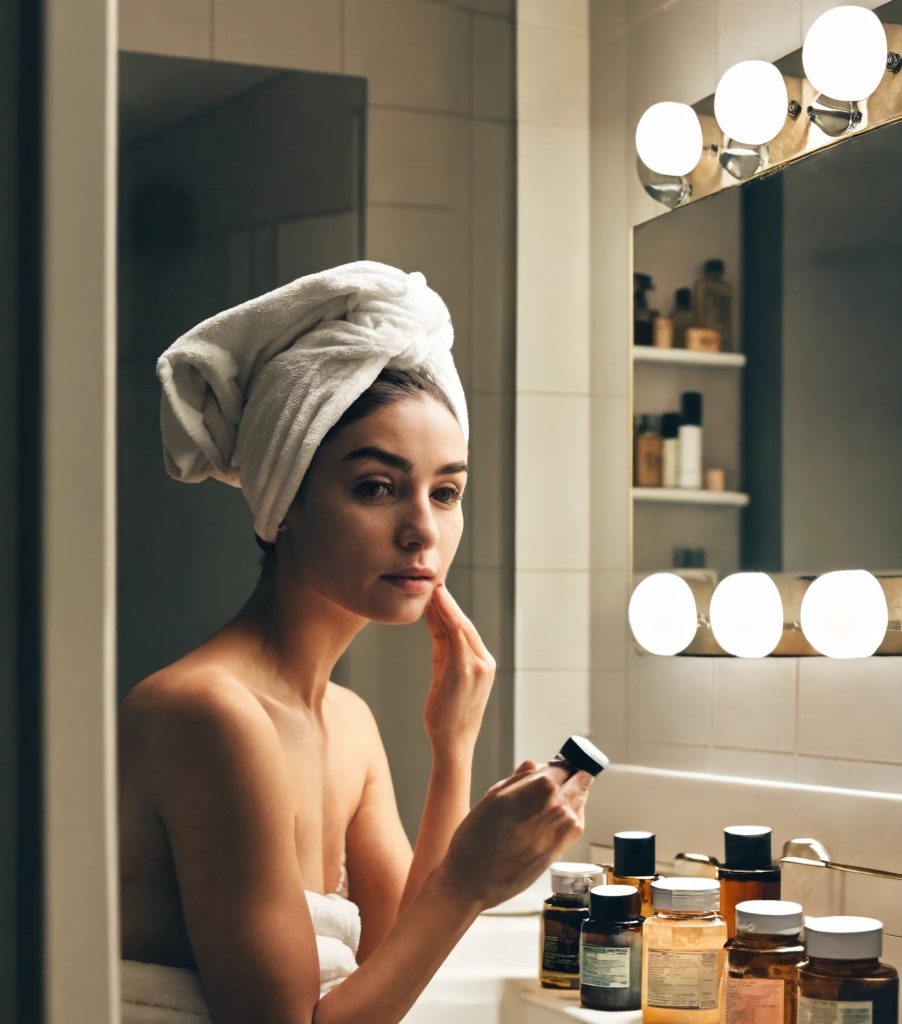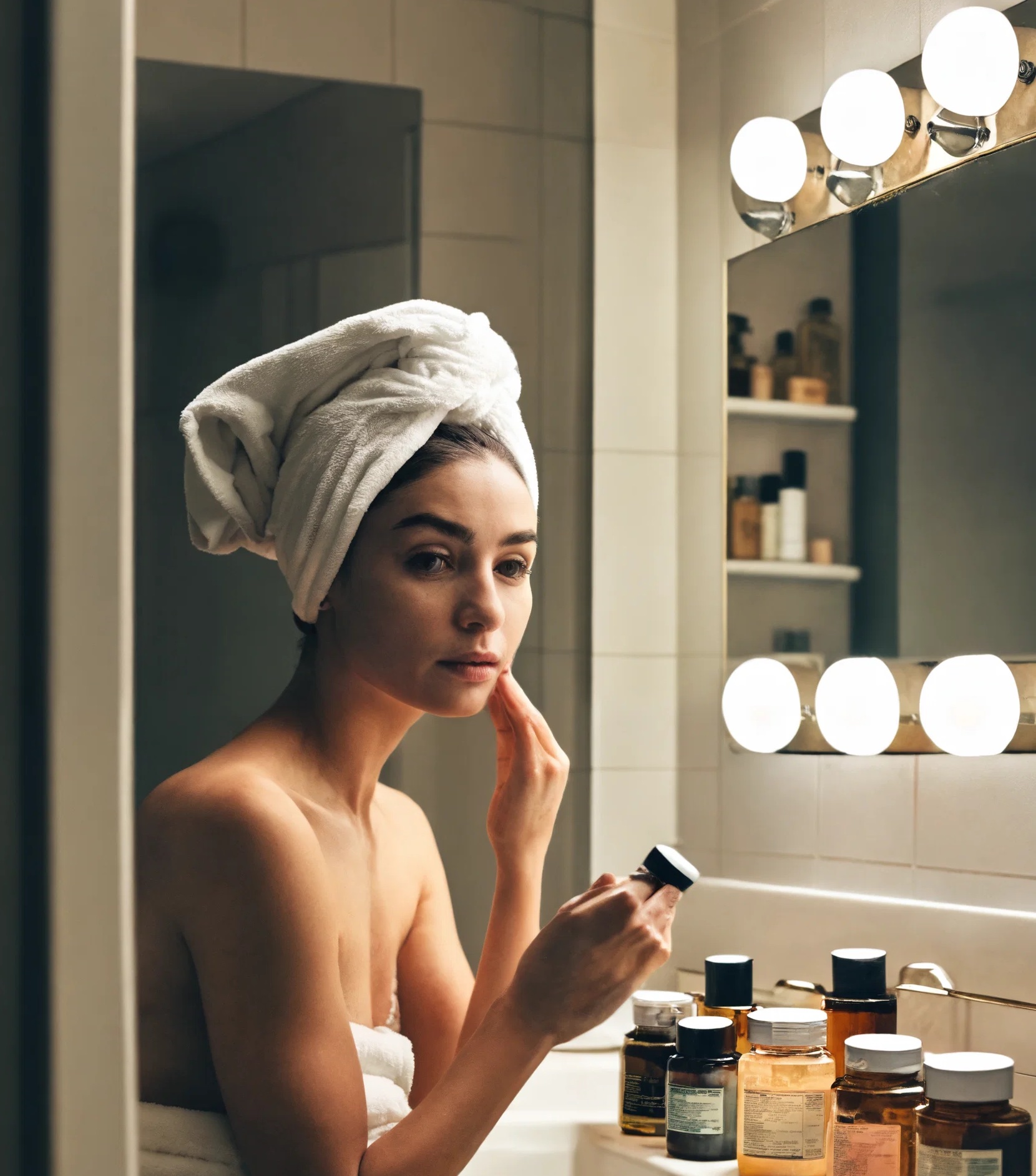The first thing you need to understand
Retinol is a very active ingredient that, at sufficiently high concentrations, requires strict adherence to a protocol for its effectiveness and safety.
Retinol for home use comes in the form of peels and serums or creams. Alternatively, professional retinol peels can be used. A modern home retinol regimen can now replace a course of salon peels – a notion unthinkable just 4-5 years ago. Nowadays, I recommend home treatments except in certain cases. Home retinol protocols are more flexible and adaptive, with effects that are equally good or better. Exceptions include very oily skin or preparing for laser scar removal, where professional peels can soften the scar tissue and better prepare it for the procedure.

Step-by-Step Guide to Using Retinol
- Choosing Retinol
- Almost every professional brand now offers retinol products. Differences lie in the ease and comfort of use, not in the effect if used correctly. A universal tip is to buy retinol from the brand your dermatologist or cosmetologist uses. This post focuses on the usage algorithm, not product selection.
- Simplify Your Routine
- When introducing retinol, remove all acidic, enzymatic, and other irritating products from your routine. Start with a basic set – gentle cleanser and neutral moisturizer. Only later can you reintroduce products, but not all. Hold off on glycolic and salicylic acids for now.
- Apply to Dry Skin
- Retinol must be applied only to dry skin. After washing your face, allow the toner (if you use one) to dry completely before applying retinol. Use only basic toner. My advice is to wash with boiled water before applying retinol to ensure the water is soft, and skip the toner altogether.
- Dosage and Course Dependency
- Retinol is both dose- and course-dependent. Follow the manufacturer’s instructions on how much to apply. Applying less won’t be effective, and more can cause irritation. Retinol is best applied at night because it degrades in sunlight and is a photosensitizer.
- Retinol vs. Acids
- Acids work locally where applied, while retinol has a “spreading” effect. Even areas where retinol wasn’t applied can start to peel. This means retinol applied around the orbital bone will affect the eyelids, so a separate eye product isn’t necessary.
- Managing Tightness and Irritation
- If retinol causes significant tightness, you can use a post-peel cream to counteract its negative effects and enhance regeneration. Alternatively, use a ceramide-based or basic moisturizer at least half an hour after applying retinol, then wait another half-hour before going to bed.
- Using Peptides with Retinol
- Peptides, especially Matrixyl in the morning, can significantly aid skin regeneration during a retinol course and enhance its effects. Some botulinum-like peptides may work less effectively with retinol.
- Introduction Schedule for Sensitive Skin
- For sensitive, dry skin, follow a schedule of 7-6-5-4-3-4-3-4-3 days, using retinol every 7th day initially and gradually increasing frequency. Once alternating between the 3rd and 4th days, some enzymatic and acidic products can be reintroduced, depending on your skin’s condition. For oily, thick, male skin, use a 5-4-3-2-3-2 schedule.
- Course Duration
- The course duration depends on the goal and skin type. For anti-aging, a course lasts 3-4 months. For acne and post-acne treatment, it can be 4-6 months or longer, under dermatological supervision.
- Retinol Before or After Procedures
- The order depends on the procedure. For scar excision, a retinol course is usually recommended beforehand to soften the scar and stimulate skin regeneration. Retinol’s impact on the SMAS layer isn’t significant. Ensure you inform your cosmetologist about your retinol course, as retinol increases photosensitivity. Retinol pairs well with biorevitalization, with necessary adjustments based on your retinol use.
Myth Busting: More Peeling Equals Better Anti-Aging
Modern retinols are designed for user comfort. Encapsulated retinol may not cause visible peeling but still works effectively. If you don’t see immediate results mid-course, it doesn’t mean the product isn’t working. Retinol’s benefits accumulate over time, typically noticeable after a three-month course. Always take photos to track progress.
Don’t Forget SPF: Use at least SPF 30 in urban settings.


Leave a Reply